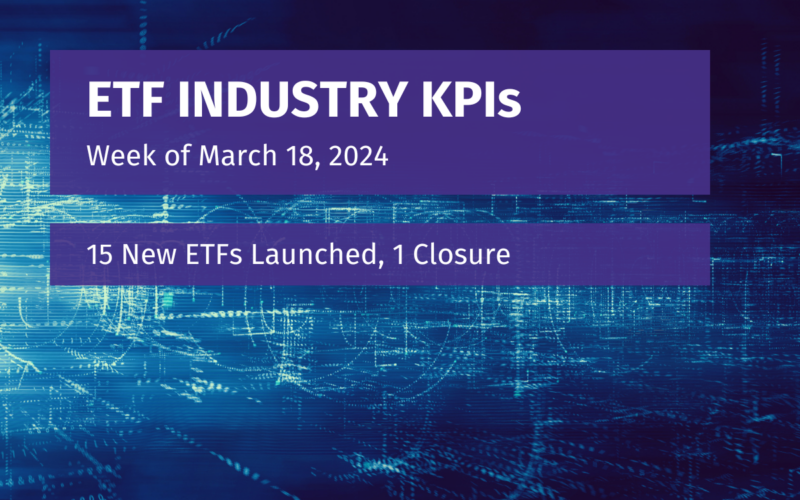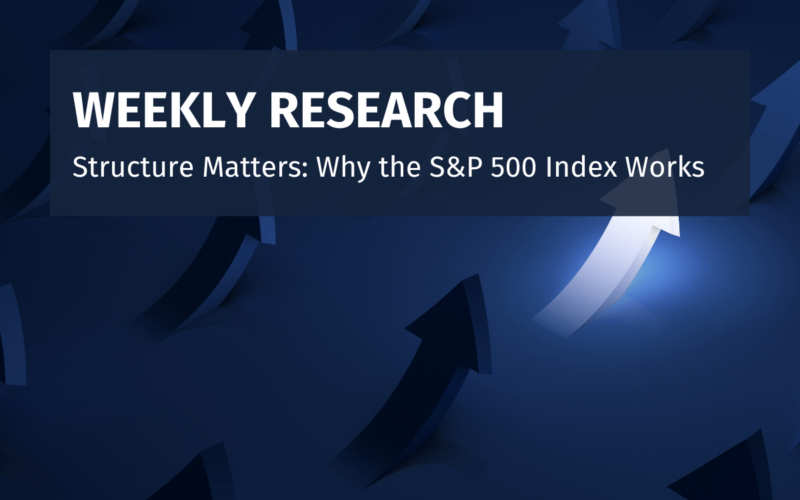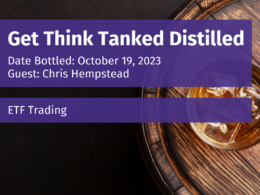Katie Stockton is the Founder of Fairlead Strategies and manager of the TACK ETF, which utilizes a technical analysis approach to portfolio construction. Where many people focus on economic indicators, she looks to the charts for signs of relative strength and momentum to make buy/sell decisions. She joins the ETF Think Tank to talk about her fund, the best ways to identify prevailing market trends and being a woman in a male-dominated industry.
With regards to the fund, TACK, which launched in 2022, uses a rules-based system that looks at relative strength indicators for 11 different sectors and 3 risk-off assets (Treasury bills, Treasury bonds and gold). The sectors whose characteristics meet the qualifying criteria get included in the portfolio with the risk-off assets filling in the gaps for any sectors that don’t qualify. In essence, TACK is a momentum strategy where positive relative strength leads to greater equity allocations and vice versa. Strong momentum and strong market breadth are usually two characteristics that lead to more sectors qualifying for inclusion in the portfolio. Stockton believes that even though trading is done based on shorter-term signals, it can be used as a long-term holding because it’s working dynamically for you. The ability to rotate into risk-off assets when momentum weakens helps to eliminate some downside risk.
So far, Stockton feels that the fund’s strategy has done what they’ve wanted it to do. She explains that while they’re not necessarily trying to avoid every drawdown, following relative strength as well as overbought/oversold indicators has done a pretty good job of minimizing the downside in many of them. Diversifying the risk-off component to include T-bills and gold also helped avoid some of the bond market risk in 2022. Regardless of conditions, Stockton wishes to keep the process 100% systematic in order to avoid letting emotional decision making take over.
One of the features of TACK is that it generally equal-weights those sectors that meet the selection criteria. That can lead to some potential large over- or underweights relative to the S&P 500. Stockton likes this approach because 1) it offers investors something that’s different from the S&P 500 and 2) it allows the fund to take positions with conviction that are showing strength regardless of weighting. If someone is worried about underallocation to a specific sector, such as tech, Stockton believes that TACK could be used as a core holding with added tech exposure around it.
Stockton believes that the real beauty of technical analysis and charting is that it’s mostly just math. It removes emotion from the equation and we really don’t need to innovate that much in order to keep things moving forward. Some of the indicators she uses, such as MACD, have been around for decades. She often takes a look at new indicators that are getting attention, but admits that it would take a lot for her to include them in her process. In the end, you can just focus on the price action and be relatively simplistic in its use.
Stockton also took a few moments to discuss her role in the male-dominated financial services industry. She says less of her time today is being spent directly with clients and more is spent at events and conferences, including a recent AdvisorHub event where she was a guest speaker. She acknowledges how the Women In ETFs group has become a huge network and resource for the industry. She would encourage more women to get involved in the field and feels the influence of women in this industry is really improving. Diversity and diversification are important.
Other key takeaways:
- Stockton generally stays away from VIX products because they can often act in ways that are unpredictable. She does, however, look at it as a transactional gauge of market sentiment. She does get excited when we see VIX spikes because that often correlates with market lows if you can time it right.
- Stockton generally believes that there’s nothing bearish about new highs. The hard part is understanding the upside once it breaks to a new high. Her team tries to establish a forecasted trajectory using older price action as a guide, but, like everything, you need to treat it in an unemotional way.
- With regards to the emergence of AI, Stockton says we’re lucky to have this much information at our disposal today. Her team hasn’t done much yet to integrate AI into their processes, but there is a lot of opportunity.
- While it’s something that she’s aware of, Stockton doesn’t seem too concerned about how the broad indices are being influenced by just a few stocks. In the end, they can’t control how the indices are structured. It can be a great exercise to just scroll through a bunch of charts and examine a basket of broad ETFs because sometimes action in one sector or group can forecast action elsewhere.
- Last year, it was all about interest rates and the Fed impacting equities. Now, NVIDIA is the #1 influencer of market sentiment.
Disclosure
All investments involve risk, including possible loss of principal.
The material provided here is for informational purposes only and should not be considered an individualized recommendation or personalized investment advice. The investment strategies mentioned here may not be suitable for everyone. Each investor needs to review an investment strategy for his or her own particular situation before making any investment decision.
All expressions of opinion are subject to change without notice in reaction to shifting market conditions. Data contained herein from third-party providers is obtained from what are considered reliable sources. However, its accuracy, completeness, or reliability cannot be guaranteed.
Examples provided are for illustrative purposes only and not intended to be reflective of results you can expect to achieve.
The value of investments and the income from them can go down as well as up and investors may not get back the amounts originally invested, and can be affected by changes in interest rates, exchange rates, general market conditions, political, social, and economic developments, and other variable factors. Investment involves risks including but not limited to, possible delays in payments and loss of income or capital. Neither Tidal nor any of its affiliates guarantees any rate of return or the return of capital invested. This commentary material is available for informational purposes only and nothing herein constitutes an offer to sell or a solicitation of an offer to buy any security and nothing herein should be construed as such. All investment strategies and investments involve risk of loss, including the possible loss of all amounts invested, and nothing herein should be construed as a guarantee of any specific outcome or profit. While we have gathered the information presented herein from sources that we believe to be reliable, we cannot guarantee the accuracy or completeness of the information presented and the information presented should not be relied upon as such. Any opinions expressed herein are our opinions and are current only as of the date of distribution, and are subject to change without notice. We disclaim any obligation to provide revised opinions in the event of changed circumstances.
The information in this material is confidential and proprietary and may not be used other than by the intended user. Neither Tidal nor its affiliates or any of their officers or employees of Tidal accepts any liability whatsoever for any loss arising from any use of this material or its contents. This material may not be reproduced, distributed, or published without prior written permission from Tidal. Distribution of this material may be restricted in certain jurisdictions. Any persons coming into possession of this material should seek advice for details of and observe such restrictions (if any).












